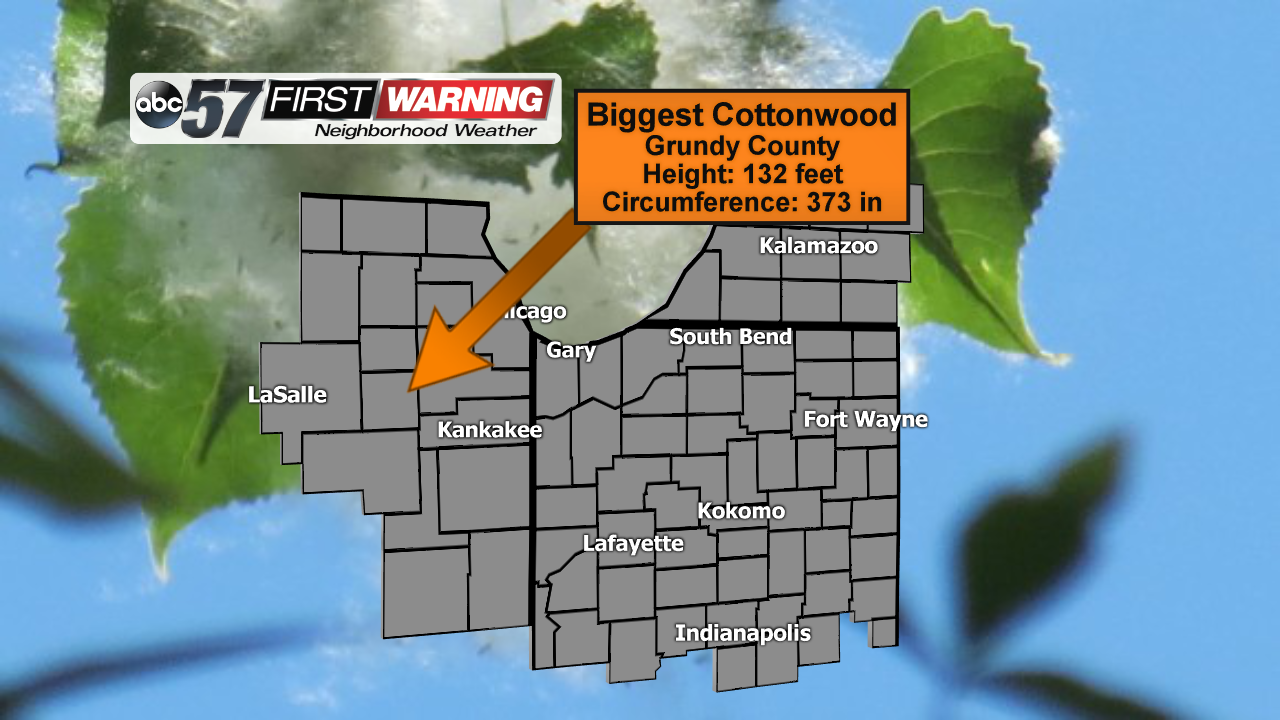Indiana's "June snow"
Posted: Jun 15, 2018 3:46 PM EST
We've all seen them. Those white balls of fluff floating through the air on a breezy day. Many compare them to cotton or snow as they pile up on the ground around the trees from which they originate. But the white fluff is actually important for the germination process of the cottonwood tree. The fluffy material that you see consists of seed hair fibers and simply surrounds the actual seed, making it mobile and able to travel long distances for better distribution. Not all of the seeds wind up growing into new cottonwood trees, though. It takes ideal conditions for a new tree to sprout from one of the airborne cotton-like seeds. Most cottonwood trees grow near water and thrive in wet conditions, which is why most of them are found across the Midwest, Great Lakes, Southeast, Mid-Atlantic, and Tennessee and Ohio Valleys.
The cottonwood trees that you see across northern Indiana and southwest Lower Michigan are likely eastern cottonwoods, and are native to Illinois and surroundings states. In fact, according to Northern State University, the largest known cottonwood tree is located in Grundy County, Illinois, just west of the Indiana-Illinois border. While that may be the largest, most cottonwoods are quite tall and have wide trunks. That makes them more common in non-residential areas.
So what's up with the fluffy cotton-like seeds? They only appear for two to three weeks each year in June, and can accumulate on the ground to create a snow-like appearance. For the most part, though, they are relatively harmless if you can tolerate the occasional pileups in your yard.
If enough of the cottonwood seeds gather, they can clog gutters, sewers and drains, especially if they become wet. On occasion they can cause problems to exterior A/C units. Most of the time they are simply a minor nuisance while driving or mowing the yard. So, if you aren't a fan of the June snow, just wait another week or so and the cottonballs will stop flying!


















